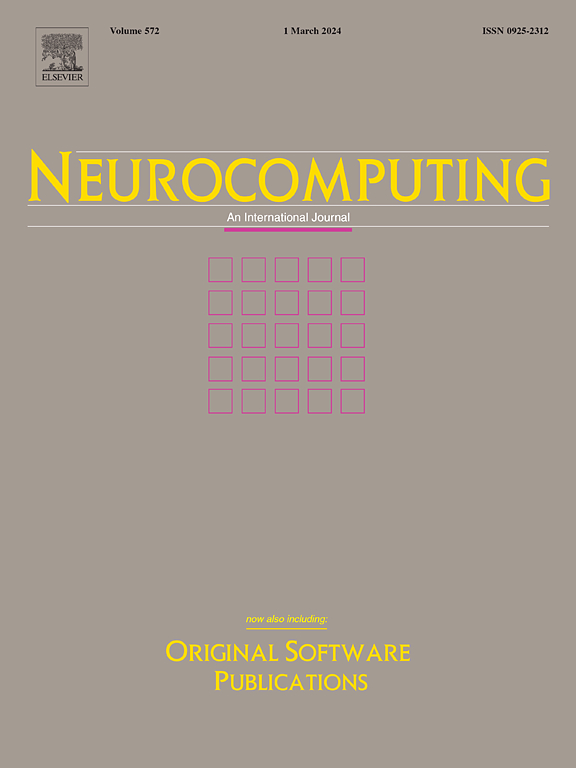基于多元群分解的鲁棒fMRI时变功能连通性分析
IF 5.5
2区 计算机科学
Q1 COMPUTER SCIENCE, ARTIFICIAL INTELLIGENCE
引用次数: 0
摘要
功能磁共振成像(fMRI)测量的时变功能连通性(TVFC)捕获了区域时间序列之间统计依赖关系的动态变化,可以通过瞬时相位同步分析来研究。相位提取需要窄带静息状态fMRI (rs-fMRI)数据,通常使用传统的带通滤波或高级模式分解技术提取。然而,滤波方法往往难以有效地消除噪声,需要预先知道截止频率,并且不能考虑数据的非平稳性。同样,现有的模态分解技术强烈依赖于输入参数,对于多变量分析不太可靠。在这里,我们介绍了多元群分解(MSwD),这是一种受生物启发的信号分解技术,将经验方法的迭代特性与强大的数学基础相结合。利用合成信号和来自人类连接组项目和自闭症脑成像数据交换I的真实rs-fMRI数据,我们发现基于mswd的PS (MSwD-PS)在几个关键领域优于四种最先进的分解技术:(1)对输入参数的鲁棒性更强,在检测真实同步方面做得更好,在模拟数据中显示出3-65%的归一化均方根误差降低,在识别大脑状态之间短暂的生物学上不可信的转换的可能性降低15.8-73.1%;(2)显示出假阳性的可能性降低,受虚假同步的影响较小。同样,基于mswd的功能连接分析改进了受试者指纹识别和使用图神经网络的自闭症谱系障碍分类。总的来说,MSwD-PS可以降低TVFC假阳性的风险,这对于处理不同临床人群中未知基础真相的rs-fMRI数据非常有用。本文章由计算机程序翻译,如有差异,请以英文原文为准。
Robust fMRI time-varying functional connectivity analysis using multivariate swarm decomposition
Time-varying functional connectivity (TVFC) measured with functional MRI (fMRI) captures dynamic changes in statistical dependencies among regional time series, which can be studied with instantaneous phase synchronization analyses. Phase extraction requires narrow-banded resting-state fMRI (rs-fMRI) data typically extracted with conventional band-pass filtering or advanced mode decomposition techniques. However, filtering methods often struggle to eliminate noise effectively, require prior knowledge of cutoff frequencies, and fail to account for non-stationarity in the data. Likewise, existing mode decomposition techniques strongly depend on input parameters and are less reliable for multivariate analyses. Here, we introduce multivariate swarm decomposition (MSwD), a bio-inspired signal decomposition technique that combines the iterative nature of empirical methods with a robust mathematical foundation. Using synthetic signals and real rs-fMRI data from the Human Connectome Project and the Autism Brain Imaging Data Exchange I, we showed that MSwD-based PS (MSwD-PS) outperforms four state-of-the-art decomposition techniques in several key areas: (1) being more robust to input parameters and better at detecting true synchronizations, showing a 3–65% lower normalized root mean square error in simulated data and being 15.8-73.1% less prone to identifying short biologically implausible transitions between brain states, and (2) showing a reduced likelihood of false positives, being less affected by spurious synchronizations. Likewise, MSwD-informed functional connectivity analysis improved subject fingerprinting and autism spectrum disorder classification using graph neural networks. Overall, MSwD-PS can reduce the risk of false positives in TVFC, which could be extremely useful for processing rs-fMRI data with unknown ground truth in diverse clinical populations.
求助全文
通过发布文献求助,成功后即可免费获取论文全文。
去求助
来源期刊

Neurocomputing
工程技术-计算机:人工智能
CiteScore
13.10
自引率
10.00%
发文量
1382
审稿时长
70 days
期刊介绍:
Neurocomputing publishes articles describing recent fundamental contributions in the field of neurocomputing. Neurocomputing theory, practice and applications are the essential topics being covered.
 求助内容:
求助内容: 应助结果提醒方式:
应助结果提醒方式:


